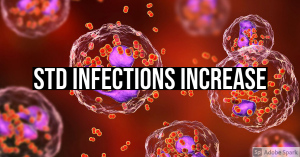Study: Twenty Percent Of Americans At Any Given Time Have And STD
With the rise in promiscuity of all types comes natural consequences of such behavior. Disease and its spread is very serious, and given how the spread of STDs has lead to the rise of drug-resistant bacteria, it is slowly reviving pre-early 20th century conditions, where a person could die from such an infection.
Now according to Fox 5 NY, citing a report from the CDC that was recently released, that at any given time, one in five, or approximately twenty percent, of Americans have an STD
ew federal data show that an estimated 1 in 5 people in the United States have had a sexually transmitted infection on any given day and half of them are in people under the age of 24.
Statistics from 2018 were released on Monday by the Centers for Disease Control and Prevention.
The analysis was published in the journal Sexually Transmitted Diseases (STI).
The data show there were nearly 68 million STIs on any given day and 26 million newly acquired STIs in 2018.
Nearly one in two incident STIs were acquired by people aged 15 to 24 years old.
Federal authorities estimate that sexually transmitted diseases cost the healthcare system billions of dollars annually and those acquired in 2018 alone will add $16 billion in direct lifetime medical costs.
Women account for a disproportionate burden of severe STI outcomes and medical costs, according to the report.
The authors recommend STI express clinics that allow walk-in STI testing and treatment without a full clinical exam.
They also suggest that pharmacies and retail health clinics be able to provide new access points for STI services, such as on-site testing and treatment.
Telehealth/telemedicine is also recommended as an especially critical component to STI services in rural areas. (source)
It will be interesting to see if these numbers increase, especially among the Zoomers, given how many identify as bisexual, knowing that the sodomic bloc is significantly more prone to STD type infections, and how this may affect the development of medicines as well as government policy toward them.






Comments are closed.